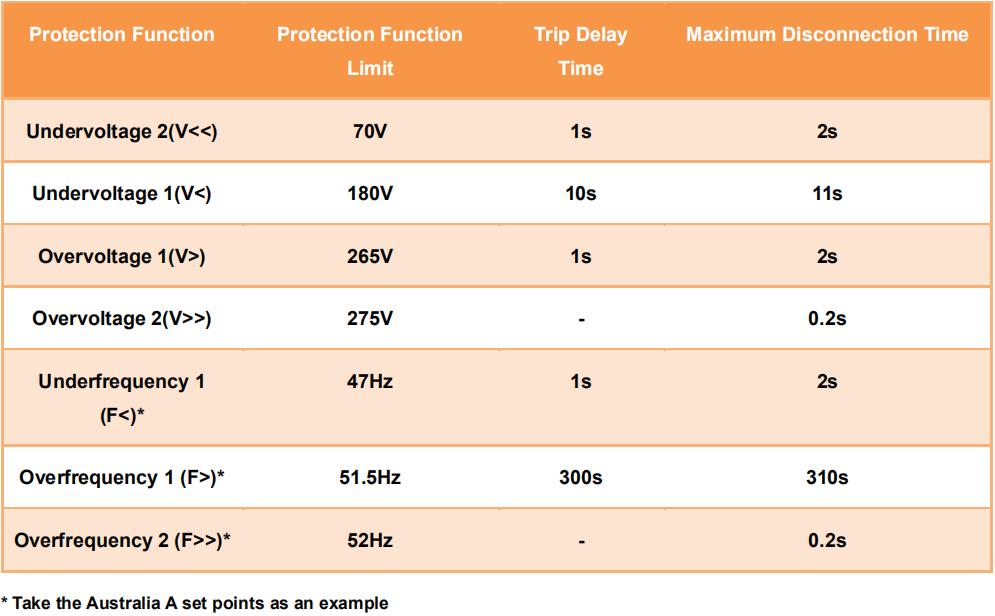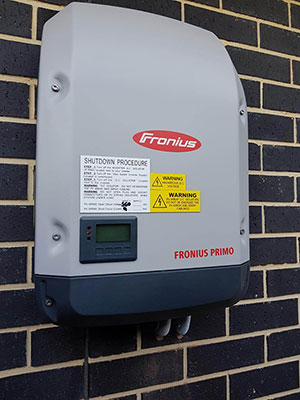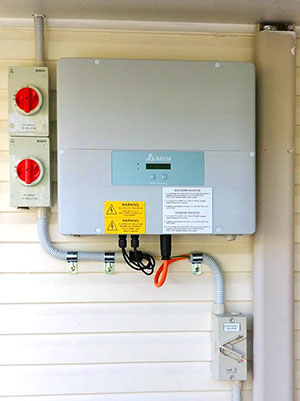- Background
The Australian renewable energy market has proposed several modifications and changes to
the standards and regulations.
Standards Australia issued the draft version of AS/NZS 4777.2:2020 as a revision of
AS/NZS 4777.2:2015 and added some detailed additional requirements for inverters.
Australian Energy Market Operator (AEMO) together with South Australian Government
proposed some regulatory changes in several consultation papers for public comments.
Koalabel, a leading solar inverter label manufacturer on the Australian market, closely follows the latest
and advanced updates of different standards and requirements to ensure the compliance of
the products in a timely manner. It is precisely because of this, Koalabel can always provide
qualified and reliable products to our customers around the world.
In the following sections of the article, Koalabel will explain some of the major proposed changes
in Australian standards together with the status of the compliance of Koalabel products.
Draft AS/NZS 4777.2:2020
The current AS/NZS 4777.2:2015 was published in October 2015. Standards Australia has
now published the draft revised version which is open for public comments. Even though it is
not a finalized version, Koalabel has already started the process of reviewing the changes and is
prepared to meet the revised requirements of the draft document.
Isolation of energy sources Clause 2.12
The draft AS/NZS 4777.2:2020 defines the requirements for isolating devices that are part of
and within the inverter which was originally from AS/NZS 5033. In that case, PV inverters can
have the DC switch integrated within the inverter, as long as it can meet the specific
requirements on the utilization category, current rating, etc.
Koalabel currently do not supply the integrated DC switch due to the requirement of the external
DC isolators. However, Koalabel is capable of providing the integrated DC switch per the current
and upcoming standards. The existing Koalabel Australian inverters already have the reserved
port for the DC switch with enough internal space to include a DC switch manufactured to
meet the requirements of both AS/NZS 5033 and the draft AS/NZS 4777.2:2020.
Inverter power quality response modes Clause 3.3
The draft AS/NZS 4777.2:2020 modified the original set points to give a detailed and flexible
setting capability. Compared with previous united set points for the country, the draft standard
specifies 3 sets of parameters for different applications.
– Australia A: Intended for application in large interconnected power systems.
– Australia B: Intended for application in small interconnected power systems.
– Australia C: Intended for application in isolated or remote power systems.
For different kinds of applications, different default voltage response set points are applied
which can more accurately define the response in different scenarios. Meanwhile, a wider
allowed range is defined which suits for special applications. Besides, V-P mode is allowed to
be used with V-Q, Fix-PF, Fix-Q modes together to achieve a more flexible solution for voltage
rise issue in Australia
The advanced power quality response requirements as set out are quite similar to the
California Rule21 requirements in the United States. The Solis products currently offered in
the US market meet these requirements with full compliance. Solis has the experience and
understanding of the power quality response requirements of the draft AS/NZS 4777.2:2020.
After the final standard comes becomes available, Solis can fully comply with the new power
quality response modes with a fast firmware modification.
Voltage and frequency limits (Passive anti-islanding protection) Clause 4.4
The draft AS/NZS 4777.2:2020 defined a more detailed two-level voltage and frequency
protection compared with the previous version.

Two-levels of protection can have a faster response on the drastic change of the grid voltage
and frequency. Solis inverters have already been developed to support this requirement with
a simple parameter modification.
Generation Control Function Section 6
The draft AS/NZS 4777.2:2020 introduced the requirements on generation limit control and
export limit control. Generation limit control indicates the limiting on the inverter output port to
reduce the inverter output power thus meeting the specific connection requirement. Export limit
control indicates the limiting on the system connection point by considering the dynamic
changes of both generation and load consumption.
Solis already supports the generation limit control by using the inverter internal measurements
and a simple setting on the inverter program is able to de-rate the inverter generation.
As for the export limit control, Solis supports connecting a smart meter or Solis export power
manager to achieve it which has already been widely used in Australia with a high accuracy
and fast response time.
In addition, draft standard requires the inverter to cease generation in case of a fault or loss of
operability to prevent any excess export power during a communication failure, etc. The Solis
‘fail-safe’ function, as required in the UK G100 standard, is already included in our products.
Above sections may not cover all the changes of the draft standard, Solis is in the process of
analyzing the full draft document of AS/NZS 4777.2:2020 and guarantees the future full
compliance of the officially released standard requirements.
- Consultation papers from AEMO and SA government
Recently AEMO worked with the SA government and performed several technical
investigations and tests. They created a technical report about minimum operational demand
thresholds in South Australia, as prepared by AEMO for SA government.
With a higher penetration of distributed energy resources within the SA network, the minimum
operational demand reaches a lowest value of 458MW in 2019 at noon, one day of Nov 2019,
while it is estimated to continuously decrease to zero by late 2022. This also brings some
challenges on the stability of the SA network which may lead to serious system disturbances
and security issues afterwards. With this background, AEMO proposed several mitigation
measures for SA government in the technical report. And SA government has issued the
consultation papers and tried to realize the corresponding measures. Following are the
corresponding consultation topics related to solar inverters
Remote disconnection and reconnection requirements for distributed solar
generating plants
The SA government has proposed to require the PV system to be capable of being remotely
disconnected and reconnected by an agent registered with the Technical Regulator. They are
trying to gain more control of the PV systems and shutdown the generation if possible to match
the demand, thus preventing the unstable situations. There have not been any details about
the agent and about how the agent should control the inverters. Potentially, this control may
be achieved through the DRM0 (Demand response mode zero) or through the specific
communication between the inverter and the agent. Clean Energy Council also strongly prefers
a “technology neutral” approach to achieving the requirement.
Solis has already supported the DRM control or the Modbus control in the Australian version
inverters. There is no technical difficulty on Solis inverters to achieve the requirement.
Export limit requirements for distributed solar generating systems
The SA government proposed to require the solar system to be capable of being export limited
and for export limits to be updated remotely. And the proposal is technology neutral which
allows for variety of ways to achieve this. This function can also bring the SA network with a
flexible control of the system export power.
Current Solis Australian inverters can perfectly meet this requirement, by either using a Solis
smart meter for one inverter or using an external Solis export power manager for multiple units
of inverters. The overall system export power can be dynamically limited to a certain value as
defined on the inverter or on the export power manager. Through the Solis monitoring system,
Solis technicians are able to modify the export limits remotely as requested by customers or
the network operator without a person being required to attend the site.
New low voltage ride-through requirements for smart inverters
AEMO and the SA government have done tests on solar inverters in the Australian market and
discovered that many products do not have the capability to withstand the voltage disturbance,
which can easily disconnect from the network and lead to a worse situation on the voltage
disturbances within the network. This voltage disturbance withstand capability is essential for
system stability and has also been added into the draft AS/NZS 4777.2: 2020.
The SA government proposed a test to demonstrate that an inverter can remain connected
and in a sustained, continuous operation for a short duration, transmission undervoltage step
reduction (50V or 20% retained voltage for duration of 80-220ms).
After receiving the detailed test procedure from AEMO, Solis engineering and testing
departments have launched the initial test for current Solis Australian inverters, having a
positive test result. Solis will continually work with a 3rd party certification organization on these
testing requirements to ensure a certified test report can be provided to AEMO, SA government
or the Clean Energy Council for updating the approval list
- Summary
Solis, one of the major inverter suppliers in Australia and we will keep following the latest
standard and regulation proposals, updating the products when necessary to meet the all
requirements as soon as possible. Solis is fully prepared for the coming changes in the
Australian market and is always keen to provide trusted and reliable products.

